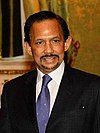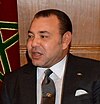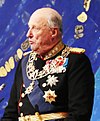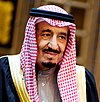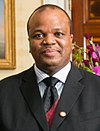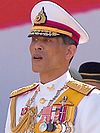ผู้ใช้:เอ็ดมัน/ทดลองเขียน
 | นี่คือหน้าทดลองเขียนของ เอ็ดมัน หน้าทดลองเขียนเป็นหน้าย่อยของหน้าผู้ใช้ ซึ่งผู้ใช้มีไว้ทดลองเขียนหรือไว้พัฒนาหน้าต่าง ๆ แต่นี่ไม่ใช่หน้าบทความสารานุกรม ทดลองเขียนได้ที่นี่ หน้าทดลองเขียนอื่น ๆ: หน้าทดลองเขียนหลัก |
- ประชุมพงศาวดาร ภาคที่ ๓๓
- ประชุมพงศาวดาร ภาคที่ ๑๓
- รพี สุจริตกุลเรื่องเฉลิมพระยศเจ้านายฉะบับมีพระรูป
- ตำนานวังหน้า
- หนังสืออิเล็กทรอนิกส์
- วงศ์สมเด็จพระเจ้ากรุงธนบุรี
- ประชุมประกาศรัชกาลที่-๔-ภาค-๔/๑๔๙-ประกาศแผ่พระราชกุศล-ให้พระบรมวงศานุวงศแลข้าทูลลอองฯ-ให้ช่วยปลูกสร้างวัดพระปฐมเจดีย
- ธรรมเนียมราชตระกูลในกรุงสยาม
- ผู้สำเร็จราชการในพระราชวังบวรสถานมงคล
- ประมวลพระราชนิพนธ์เบ็ดเตล็ด ในพระบาทสมเด็จพระจุลจอมเกล้าเจ้าอยู่หัว
- รายพระนามพระบรมวงศานุวงศ์และนามบุตรขุนนางซึ่งพระบาทสมเด็จพระจุลจอมเกล้าเจ้าอยู่หัวทรงโสกันต์ เกศากันต์และตัดจุก
- บาญชีพระบรมวงศานุวงศ์ฝ่ายหน้าฝ่ายใน ร.ศ. 128
- บาญชีมหามกุฎราชสันติวงศ์ พุทธศก 2468
- ประชุมพงศาวดาร ภาคที่ 33 บุรพภาคพระธรรมเทศนาเฉลิมพระเกียรติพระบาทสมเด็จฯ พระนั่งเกล้าเจ้าอยู่หัว / พระราชนิพนธ์ ในพระบาทสมเด็จฯ พระจุลจอมเกล้าเจ้าอยู่หัว
- จดหมายเหตุความทรงจำกรมหลวงนรินทรเทวี
- จุฬาลงกรณราชสันตติวงศ์ พระนามพระราชโอรส ธิดา และพระราชนัดดา
- หนังสือหายากอิเล็กทรอนิกส์ภาษาไทย (1920 รายการ) รายการที่1-350 (ก-จ)
- หนังสือหายากอิเล็กทรอนิกส์ภาษาไทย (1920 รายการ) รายการที่351-626 (ฉ-น)
- หนังสือหายากอิเล็กทรอนิกส์ภาษาไทย (1920 รายการ) รายการที่627-1061 (บ-ฝ)
- หนังสือหายากอิเล็กทรอนิกส์ภาษาไทย (1920 รายการ) รายการที่1062-1381 (พ-ย)
- หนังสือหายากอิเล็กทรอนิกส์ภาษาไทย (1920 รายการ) รายการที่1382-1920 (ร-ฮ)
- พงษาวดารราชินิกูลบางช้าง
- ราชสกุลวงศ์
- ราชสกุลวงศ์ในพระบาทสมเด็จพระปวเรนทราเมศ มหิศเรศรังสรรค์ พระบาทสมเด็จพระปิ่นเกล้าเจ้าอยู่หัว
- พระประวัติและพระอาการประชวรสมเด็จพระนางเจ้าโสมนัสวัฒนาวดี
- อภินิหารบรรพบุรุษ
- “สตรี” ที่ได้รับพระราชทานเกียรติยศเป็นพิเศษ
- เพศวิถีผู้หญิงสมัย ร.5
- หม่อมเจ้าหญิงที่รักกับไพร่และสามัญชนจนขายตัวเป็นทาส สุดท้ายต้องถูกถอดยศ
- พระราชพิธีสารท (สมเด็จกรมพระ)
- พระราชพิธีสารท (บรมราชินี)
- ปฐมวงศ์
บทความที่เกี่ยวข้อง
[แก้]อ้างอิง
[แก้]รายพระนามพระมหากษัตริย์ที่ครองราชย์อยู่ในปัจจุบัน
[แก้]
พระมหากษัตริย์เป็นประมุขในระบอบราชาธิปไตยซึ่งเป็นรูปแบบของรัฐบาลที่รัฐถูกปกครองโดยบุคคลที่มีหน้าที่ตลอดชีวิต หรือจนกว่าจะสละราชสมบัติและมักสืบทอดบัลลังก์โดยกำเนิด[1] พระมหากษัตริย์อาจเป็นเผด็จการ (หรือเรียกว่าสมบูรณาญาสิทธิราชย์)[2]หรืออาจเป็นผู้นำทางพิธีการทางจารีตประเพณี การใช้สิทธิเพียงอย่างเดียว หรือไม่มีอำนาจสำรอง ใด ๆ ทั้งสิ้น เนื่องด้วย อำนาจที่แท้จริงอยู่ในรัฐสภา และ/หรือคณะรัฐมนตรี (ในราชาธิปไตยภายใต้รัฐธรรมนูญ)[3] ในหลายกรณีพระมหากษัตริย์จะเชื่อมโยงกับศาสนาประจำชาติด้วย[4] รัฐส่วนใหญ่มีพระมหากษัตริย์เพียงพระองค์เดียวไม่ว่าในเวลาใด ๆ แม้ว่าจะมีผู้สำเร็จราชการแผ่นดินซึ่งอาจปกครองเมื่อพระมหากษัตริย์ทรงพระเยาว์ หรือไม่สามารถปกครองได้[5] กรณีที่พระมหากษัตริย์ทั้งสองปกครองพร้อมกันในรัฐเดียวเช่นเดียวกับสถานการณ์ปัจจุบันในประเทศอันดอร์ราเป็นที่รู้จักกันดีว่าเป็นผู้ปกครองร่วมref name="hindley">Hindley, Geoffrey (2000). The Royal Families of Europe. London: Constable & Robinson. pp. 1–6. ISBN 978-0-7867-0828-4.</ref>
พระมหากษัตริย์มีความโดดเด่นด้วยฐานันดรศักดิ์และรูปแบบ ซึ่งโดยส่วนใหญ่แล้วจะมีการกำหนดโดยประเพณีและได้รับการรับรองภายใต้รัฐธรรมนูญของรัฐ ความหลากหลายของฐานันดรศักดิ์; ตัวอย่างเช่น "กษัตริย์" และ "ราชินี", "เจ้าชาย" และ "เจ้าหญิง" "จักรพรรดิ" และ "จักรพรรดินี" แม้ว่าจะได้รับการระบุในภาษาท้องถิ่นของตนแตกต่างกันแต่พระนามและฐานันดรศักดิ์ในรายการด้านล่างนี้ได้รับการออกแบบโดยใช้ภาษาอังกฤษเทียบเท่ากันเลขโรมันใช้เพื่อแยกความแตกต่างของผู้ปกครองที่มีชื่อเดียวกันได้ถูกนำมาใช้โดยทั่วไป[6]
ในการศึกษาทางการเมืองและสังคมวิทยากษัตริย์มักเกี่ยวข้องกับกฎทางพันธุกรรม พระมหากษัตริย์ส่วนใหญ่ในบริบททางประวัติศาสตร์และในปัจจุบันได้เกิดและเติบโตภายในราชวงศ์[7][8] การสืบทอดราชบัลลังก์ได้รับการกำหนดโดยใช้วิธีที่แตกต่างหลากหลาย เช่น ความใกล้ชิดทางสายเลือด สิทธิของบุตรหัวปี และความอาวุโสของญาติฝ่ายผู้ชาย ราชาธิปไตยบางครั้งไม่ได้สืบทอดทางสายเลือดและผู้ปกครองจะถูกกำหนดโดยกระบวนการคัดเลือก ตัวอย่างที่ทันสมัยคือบัลลังก์ของมาเลเซีย[9] ระบบเหล่านี้ต่อต้านรูปแบบแนวคิดของระบอบกษัตริย์ แต่โดยทั่วไปแล้วถือว่าเป็นเช่นนั้นเพราะพวกเขาเก็บรักษาลักษณะเฉพาะบางอย่าง[10] หลายระบบใช้การรวมกันของการสืบทอดทางสายเลือดและการคัดเลือกซึ่งการเลือกตั้งหรือการแต่งตั้งผู้สืบสกุลถูกจำกัดให้เป็นสมาชิกของเชื้อสายราชวงศ์ref>Shawcross, William (1994). Cambodia's new deal: a report. Carnegie Endowment for International Peace. p. 106. ISBN 978-0-87003-051-2.</ref>[11]
รายการด้านล่างนี้แสดงราชอาณาจักรต่างๆซึ่งจัดเรียงตามตัวอักษร พระมหากษัตริย์เหล่านี้ครองราชย์ในฐานะประมุขแห่งรัฐในรัฐเอกราชของตน สำหรับผู้อ้างสิทธิ์ในปัจจุบันที่ถูกยกเลิกบัลลังก์ให้ดูที่ผู้อ้างสิทธิ์ในราชบัลลังก์
รายพระนาม
[แก้]หมายเหตุ
[แก้]- ↑ 1.0 1.1 ประธานาธิบดีแห่งฝรั่งเศสและบิชอปแห่งอูร์เฌ็ลย์ each hold the position of co-prince of Andorra, but there is no personal title attached to the role. อ้างอิงผิดพลาด: ป้ายระบุ
<ref>ไม่สมเหตุสมผล มีนิยามชื่อ "Andorra" หลายครั้งด้วยเนื้อหาต่างกัน - ↑ 2.00 2.01 2.02 2.03 2.04 2.05 2.06 2.07 2.08 2.09 2.10 2.11 2.12 2.13 2.14 2.15 Elizabeth II is currently queen regnant of sixteen separate Commonwealth realms (see separate entries), and has previously reigned as queen of sixteen other countries, which have since abolished the monarchy.
- ↑ 3.00 3.01 3.02 3.03 3.04 3.05 3.06 3.07 3.08 3.09 3.10 Elizabeth II previously reigned over this country as Queen of the United Kingdom, from 6 February 1952 until the nation's independence and the creation of a separate crown.
- ↑ 4.0 4.1 The royal family of Belgium and the House of Windsor are both lines of the House of Saxe-Coburg and Gotha,[31][32] which is a branch of the House of Wettin.[33]
- ↑ Elizabeth II previously reigned over Papua New Guinea as Queen of Australia, from 6 February 1952 until the nation's independence and the creation of a separate crown.
- ↑ Coronation took place 2 June 1953.[28]
- ↑ Lower flag is for use in Scotland only, upper flag is used in England, Northern Ireland and Wales.
- ↑ Hamad bin Isa reigned as Amir of the State of Bahrain until 14 February 2002, when he assumed the new title of King of Bahrain under a new Constitution.[29]
- ↑ 9.0 9.1 A clan of the Utub tribe.[30]
- ↑ The Belgian monarch does not automatically assume the throne at the death or abdication of his predecessor; he only becomes monarch upon taking a constitutional oath
- ↑ Coronation took place 6 November 2008.[35]
- ↑ Coronation took place 1 August 1968.[37]
- ↑ Coronation took place 29 October 2004.[38]
- ↑ A branch of the Varman dynasty. The surname "Norodom" is used by the descendants of Norodom I.[39][40]
- ↑ The king is selected for life by the Royal Council of the Throne from amongst the male descendants of kings Ang Duong, Norodom, and Sisowath.[41]
- ↑ 16.0 16.1 Officially the House of Schleswig-Holstein-Sonderburg-Glücksburg, which is a branch of the House of Oldenburg.[42]
- ↑ "Akihito" is the current emperor's given name, but it is not his regnal name, and he is never referred to as this in Japanese. The era of Akihito's reign bears the name "Heisei", and according to custom he will be renamed "Emperor Heisei" following his death.[44]
- ↑ Coronation took place 12 November 1990.[45]
- ↑ The Japanese emperor does not have a family name.[46][47] The use of the name "Yamato" for the household derives from the ancient Yamato Court.[48] It is used often as a name for the imperial dynasty, but has no official basis.
- ↑ Formally enthroned on 9 June 1999.[49]
- ↑ Succession is based upon primogeniture. However, the reigning king may also select his successor from among eligible princes.[50]
- ↑ The heir is appointed by the reigning emir, and the nomination must also be approved by a majority of members in the National Assembly.[53] The throne is also traditionally alternated between the two main branches of the Al Sabah family: the Al Salem and Al Jaber.[54][55] The current emir is of the Al Jaber branch.
- ↑ Coronation took place 31 October 1997. Has previously reigned as king from 12 November 1990 until 25 January 1995.[57]
- ↑ Formally enthroned on 15 August 1990.[59] Prior to his accession, Hans-Adam had served as prince regent since 26 August 1984.[60] On 15 August 2004, the prince formally appointed his son Prince Alois as regent, in preparation for his succession to the throne, but remained head of state in accordance with the constitution.[61]
- ↑ Prior to formal enthronement, Henri had served as prince regent since 4 March 1998.[62]
- ↑ The royal family of Luxembourg are members of the House of Nassau-Weilburg,[63] descended from the House of Nassau and the Parma branch of the House of Bourbon.
- ↑ Official title: Yang di-Pertuan Agong. It roughly translates as "Supreme Head of State", and is commonly rendered in English as "King".[64]
- ↑ Elected on 14 October 2016.[65] Term of office started on 13 December 2016.[66]
- ↑ The Yang di-Pertuan Agong is elected to a five-year term by and from amongst the nine hereditary rulers of the Malay states, who form the Council of Rulers. The position has to date been, by informal agreement, systematically rotated between the nine; the order was originally based on seniority.[67]
- ↑ Albert II was formally enthroned as prince in a two-part ceremony, in accordance with tradition, on 12 July and 19 November 2005.[69][70] He had previously been serving as regent since 31 March 2005.[71]
- ↑ Coronation took place 30 July 1999.[73]
- ↑ The Dutch royal family is descended from the Houses of Nassau and Lippe. [75][76]
- ↑ Formally enthroned on 21 January 1991, and consecrated on 23 June 1991. Prior to his accession, Harald had served as prince regent since 1 June 1990.[78]
- ↑ Monarchy is constitutional by law, but remains absolute in practice.[81]
- ↑ Succession is determined by consensus within the House of Saud as to who will be Crown Prince. This consensus may change depending on the Crown Prince's actions:[83]
- ↑ Succession is subject to customary law, and does not follow primogeniture. A council of elders selects who among the reigning king's wives will be mother of the next king. This woman will succeed as Ndlovukati upon her son's ascension to throne, and will rule alongside him for the duration of his reign. The king's first two wives are considered ineligible.[86][87]
- ↑ Formally enthroned on 19 September 1973.[89]
- ↑ Name is also written as Mahawachiralongkon.[91] He is also styled Rama X.[92]
- ↑ Vajiralongkorn was proclaimed King on 1 December 2016 with retroactive effect to the date of his father's death.[92]
- ↑ A line of the Tuʻi Kanokupolu dynasty.[94][95]
- ↑ The Al Nahyan are a branch of the Al Falahi, a clan of the Yas tribe.[96]
- ↑ The Prime Minister is the head of the government. However, with the consent of the Supreme Council, the office is appointed by the President, who retains considerable power.[97]
- ↑ According to the Constitution, the President of the United Arab Emirates is elected by the Federal Supreme Council from among the individual rulers of the seven emirates.[97] However, by informal agreement the Presidency is always passed to the head of the Al Nahyan clan, the Emir of Abu Dhabi (see constituent monarchs), which makes it a de facto hereditary position. In addition, the appointed Prime Minister has always been the head of the Al Maktoum clan and Emir of Dubai.[98]
- ↑ As Sovereign of the Vatican City, by virtue of being Bishop of Rome.
อ้างอิง
[แก้]- ↑ "Monarch". CollinsDictionary.com. Collins English Dictionary - Complete & Unabridged 11th Edition. สืบค้นเมื่อ 22 September 2012.
- ↑ Herb, Michael (1999). All in the family: absolutism, revolution, and democracy in the Middle East. New York: SUNY Press. p. 235. ISBN 978-0-7914-4168-8.
- ↑ Spellman, W. M. (2001). Monarchies 1000–2000. London: Reaktion Books. pp. 22–23. ISBN 978-1-86189-087-0.
- ↑ Harris, Nathanial (2009). Systems of Government: Monarchy. London: Evans Brothers. p. 38. ISBN 978-0-237-53932-0.
- ↑ "Regent". CollinsDictionary.com. Collins English Dictionary - Complete & Unabridged 11th Edition. สืบค้นเมื่อ 22 September 2012.
- ↑ Merriam-Webster's manual for writers and editors. Springfield, United States: Merriam-Webster, Inc. 1998. p. 94. ISBN 978-0-87779-622-0.
- ↑ อ้างอิงผิดพลาด: ป้ายระบุ
<ref>ไม่ถูกต้อง ไม่มีการกำหนดข้อความสำหรับอ้างอิงชื่อhindley - ↑ Forty, Sandra; Millidge, Judith; Riley, Ed (2009). World Royal Families. United States: Book Sales, Inc. p. 94. ISBN 978-0-7858-2530-2.
{{cite book}}: CS1 maint: multiple names: authors list (ลิงก์) - ↑ Constitution of Malaysia, Art. 32, Sec. 3.
- ↑ Bouvier, John; Rawle, Francis (1914). Bouvier's Law Dictionary and Concise Encyclopedia. Vol. 2 (3rd ed.). Vernon Law Book Company. pp. 2237–2238.
- ↑ Garner, James Wilford (1910). Introduction to Political Science: A Treatise on the Origin, Nature, Functions, and Organization of the State. American Book Company. pp. 169–178. ISBN 978-1-115-59599-5.
- ↑ {{Cite web | author = Government of Andorra | title = Recepció de Nadal del copríncep episcopal Joan-Enric Vives | work = Portal web del Govern d’Andorra | publisher = Government of Andorra | date = 23 December 2009 | url = http://www.govern.ad/?p=3995 | accessdate = 7 December 2010
- ↑ 13.00 13.01 13.02 13.03 13.04 13.05 13.06 13.07 13.08 13.09 13.10 13.11 13.12 13.13 13.14 Government of the United Kingdom. "The Queen and the Commonwealth". Official website of the British Monarchy. The Royal Household. สืบค้นเมื่อ 12 April 2010.
- ↑ Constitution of Antigua and Barbuda, Art. 68.
- ↑ Constitution of Australia, Art. 61.
- ↑ Constitution of the Bahamas, Art. 71.
- ↑ Constitution of Canada, Art. 9.
- ↑ Constitution of Belize, Art. 36.
- ↑ Constitution of Grenada, Art. 57.
- ↑ Constitution of Jamaica, Art. 68.
- ↑ Constitution Act 1986: Part 1.
- ↑ Constitution of Papua New Guinea, Art. 82.
- ↑ Constitution of Saint Kitts and Nevis, Art. 51.
- ↑ Constitution of Saint Lucia, Art. 59.
- ↑ Constitution of Saint Vincent and the Grenadines, Art. 50.
- ↑ Constitution of Solomon Islands, Art. 1.
- ↑ Constitution of Tuvalu, Art. 48.
- ↑ Government of the United Kingdom. "Accession and Coronation". Official website of the British Monarchy. The Royal Household. สืบค้นเมื่อ 12 April 2010.
- ↑ 29.0 29.1 "The Kingdom of Bahrain: The Constitutional Changes". The Estimate. The International Estimate, Inc. 22 February 2002. สืบค้นเมื่อ 12 November 2011.
- ↑ Alghanim, Salwa (1998). The reign of Mubarak al-Sabah: Shaikh of Kuwait, 1896-1915. I.B.Tauris. p. 5. ISBN 978-1-86064-350-7.
- ↑ "The Belgian Monarchy" (PDF). Government of Belgium, Chancellery of the Prime Minister. p. 11. สืบค้นเมื่อ 28 December 2012.
- ↑ Government of the United Kingdom. "The House of Windsor". Official website of the British Monarchy. The Royal Household. สืบค้นเมื่อ 9 December 2010.
- ↑ Herzogliche Hauptverwaltung. "The House of Wettin". Das Herzogliche Haus Sachsen-Coburg und Gotha. The Duke of Saxe-Coburg and Gotha's Family Foundation. สืบค้นเมื่อ 9 December 2010.
- ↑ Government of Belgium. "King Philippe". The Belgian Monarchy. Federal Public Service; Chancery of the Prime Minister. สืบค้นเมื่อ 22 July 2013.
- ↑ Denyer, Simon (7 November 2008). "Bhutan's Dragon King shows he is man of the people". Reuters. Thomson Reuters. สืบค้นเมื่อ 12 November 2011.
- ↑ Staff writers (15 December 2006). "Bhutanese king steps down early". BBC News. British Broadcasting Corporation. สืบค้นเมื่อ 13 November 2011.
- ↑ 37.0 37.1 Government of Brunei. "Prime Minister". The Royal Ark. Office of the Prime Minister. สืบค้นเมื่อ 12 November 2011.
- ↑ Chandara, L., Samean, Y., Vachonn, M., Plaut, E., Botumroath, L. and Soenthrith, S. (October 2004). "King Norodom Sihamoni's coronation: a special supplement to the Cambodia Daily". The Cambodia Daily. สืบค้นเมื่อ 15 November 2011.
{{cite news}}: CS1 maint: multiple names: authors list (ลิงก์) - ↑ 39.0 39.1 Government of Cambodia. "The Monarchy". Royal Embassy of Cambodia in the United Kingdom. สืบค้นเมื่อ 3 December 2011.
- ↑ Corfield, Justin J. (2009). The history of Cambodia. ABC-CLIO. p. 38. ISBN 978-0-313-35722-0.
- ↑ Constitution of Cambodia, Art. 14.
- ↑ Adams Woods, Frederick (2009). Mental and Moral Heredity in Royalty. BiblioBazaar, LLC. p. 225. ISBN 978-1-115-33425-9.
- ↑ Government of Denmark. "Her Majesty The Queen of Denmark". The Danish Monarchy. Royal Court of Denmark. สืบค้นเมื่อ 12 April 2010.
- ↑ Embassy of Japan in Pakistan (7 December 2007). "National Day of Japan to be celebrated" (Press release). Government of Japan. คลังข้อมูลเก่าเก็บจากแหล่งเดิมเมื่อ 3 January 2009. สืบค้นเมื่อ 7 December 2010.
- ↑ 45.0 45.1 Government of Japan. "Their Majesties the Emperor and Empress". Imperial Household Agency. สืบค้นเมื่อ 12 April 2010.
- ↑ Skya, Walter (2009). Japan's holy war: the ideology of radical Shintō ultranationalism. Duke University Press. p. 291. ISBN 978-0-8223-4423-0.
- ↑ National Committee of Japanese Historians (1990). Historical studies in Japan. Vol. VII. Brill Publishers. p. 151. ISBN 978-4-634-65040-4.
- ↑ Seagrave, Sterling; Seagrave, Peggy (2001). The Yamato Dynasty: The Secret History of Japan's Imperial Family. Broadway Books. pp. 4–10. ISBN 978-0-7679-0497-1.
- ↑ MEDEA Institute. "Abdullah II (Jordan)". สืบค้นเมื่อ 12 November 2011.
- ↑ Constitution of Jordan, Art. 28.
- ↑ Government of Jordan. "His Majesty King Abdullah II". Abdullah II Official Website. The Royal Hashemite Court. สืบค้นเมื่อ 12 November 2011.
- ↑ Government of Jordan. "The Hashemites: Introduction". Office of King Hussein I. The Royal Hashemite Court. สืบค้นเมื่อ 7 December 2010.
- ↑ Constitution of Kuwait, Art. 4.
- ↑ Cordesman, Anthony H (2007). Gulf military forces in an era of asymmetric wars. Vol. 2. Greenwood Publishing Group. p. 111. ISBN 978-0-275-99250-7.: "The royal family, Al Sabah, has two branches—Al Jaber and Al Salem—and has traditionally alternated in ruling Kuwait. This tradition, however, has changed following the death of Jaber Al Sabah [1977–2006]."
- ↑ Political Risk Yearbook, 1998. Political Risk Services. 1998. p. 48. ISBN 978-1-85271-371-3.: "The two branches of the Al-Sabah family, the Jabers and the Salems, have traditionally alternated their rule, one providing the emir and the other the crown prince (also serving as prime minister)."
- ↑ Government of Kuwait. "H.H. Amir Sabah Al-Ahmad Al-Jaber Al-Sabah". Diwan of the Almiri Court. สืบค้นเมื่อ 15 November 2011.
- ↑ 57.0 57.1 Government of Lesotho. "His Majesty King Letsie III". The Lesotho Monarchy. คลังข้อมูลเก่าเก็บจากแหล่งเดิมเมื่อ 26 June 2009. สืบค้นเมื่อ 28 April 2010.
- ↑ Olivier, J. "Basotho in Lesotho". Sesotho Online. Sesotho Online. สืบค้นเมื่อ 7 December 2010.
- ↑ Leistra, Netty. "Furstentum Liechtenstein". Netty's Royalty Page. สืบค้นเมื่อ 7 December 2010.
- ↑ 60.0 60.1 Government of Liechtenstein. "Prince Hans-Adam II". Portal of the Principality of Liechtenstein. Government Spokesperson’s Office. คลังข้อมูลเก่าเก็บจากแหล่งเดิมเมื่อ 29 June 2009. สืบค้นเมื่อ 7 December 2010.
- ↑ Image Liechtenstein. "The Principality of Liechtenstein" (PDF). Portal of the Principality of Liechtenstein. สืบค้นเมื่อ 9 July 2011.
- ↑ 62.0 62.1 Government of Luxembourg. "Grand Duke Henri". Press and Information Service. สืบค้นเมื่อ 11 November 2010.
- ↑ "Droits de Succession: Ordre successoral" (ภาษาฝรั่งเศส). Grand Ducal Court of Luxembourg. สืบค้นเมื่อ 28 December 2012.
- ↑ Malaysian Administrative Modernisation and Management Planning Unit. "The Yang di-Pertuan Agong". myGovernment. Government of Malaysia. สืบค้นเมื่อ 4 December 2011.
- ↑ "Kelantan Sultan will be new King". The Star. 14 October 2016. สืบค้นเมื่อ 14 October 2016.
- ↑ "Sultan Muhammad V begins reign as 15th Yang di-Pertuan Agong". Malay Mail. Kota Bharu. 13 December 2016. สืบค้นเมื่อ 13 December 2016.
- ↑ National Library of Malaysia. "Election of the Yang di-Pertuan Agong and Timbalan Yang di-Pertuan Agong". Government of Malaysia. สืบค้นเมื่อ 4 December 2011.
- ↑ National Library of Malaysia. "Yang di-Pertuan Agong XIV". Government of Malaysia. สืบค้นเมื่อ 5 January 2011.
- ↑ Agence France-Presse (20 November 2005). "Prince Albert's Monaco enthronement complete". ABC News Online. Australian Broadcasting Corporation. สืบค้นเมื่อ 7 December 2010.
- ↑ "Biography". Prince's Palace of Monaco. 2011. สืบค้นเมื่อ 10 December 2011.
- ↑ Sector, Charlotte (6 April 2005). "Playboy Prince Fulfills His Destiny". ABC News. ABC News Internet Ventures. สืบค้นเมื่อ 7 December 2010.
- ↑ "The House of Grimaldi". Infinite Public Relations. สืบค้นเมื่อ 12 April 2010.
- ↑ Staff writers (24 July 1999). "Mohammed VI takes Moroccan throne". BBC News. British Broadcasting Corporation. สืบค้นเมื่อ 15 November 2011.
- ↑ Laurenson, John (11 March 2006). "The most powerful man in Morocco". BBC News. British Broadcasting Corporation. สืบค้นเมื่อ 15 November 2011.
- ↑ Government of the Netherlands. "Orange and Nassau". The Dutch Royal House. Government Information Service. คลังข้อมูลเก่าเก็บจากแหล่งเดิมเมื่อ 24 November 2010. สืบค้นเมื่อ 9 December 2010.
- ↑ Steinberg, Glenn A. "The Former Ruling House of Lippe, 1939-1945". European Royalty during World War II. The College of New Jersey. สืบค้นเมื่อ 9 December 2010.
- ↑ Government of the Netherlands. "Zijne Majesteit Koning Willem-Alexander" [His Majesty King Willem-Alexander]. The Dutch Royal House (ภาษาดัตช์). Government Information Service. สืบค้นเมื่อ 30 April 2013.
- ↑ 78.0 78.1 Government of Norway. "His Majesty King Harald". Official website of the Royal House of Norway. Royal Court of Norway. สืบค้นเมื่อ 7 December 2010.
- ↑ Sultan Qaboos Centre for Islamic Culture. "About H.M the Sultan". Government of Oman, Diwan of the Royal Court. สืบค้นเมื่อ 12 November 2011.
- ↑ Nyrop, Richard F (2008). Area Handbook for the Persian Gulf States. Wildside Press LLC. p. 341. ISBN 978-1-4344-6210-7.
- ↑ World and Its Peoples: Arabian Peninsula. Marshall Cavendish. 2006. p. 64. ISBN 978-0-7614-7571-2.
- ↑ Government of Qatar. "H.H. The Amir's Biography". Diwan of the Amiri Court. สืบค้นเมื่อ 12 November 2011.
- ↑ Cordesman, Anthony H (2009). Saudi Arabia: national security in a troubled region. ABC-CLIO. p. 9. ISBN 978-0-313-38076-1. "In October 2006, King Abdullah issued a new succession law that amended the 1992 Basic Law and formalized the process by creating the Allegiance Commission. The new law both defines how a king will choose among possible candidates and provides a formal way for developing a consensus to choose the king's successor. The Allegiance Commission will select a king and crown prince upon the death or incapacitation of either. This commission expands the role of the ruling family in the selection process. ... It is composed of some 35 sons and grandsons of the late founder of the Kingdom, Abd al-Aziz al-Saud, who will vote in secret ballots on who could and could not be eligible to be future kings and crown princes."
- ↑ "Saudi Arabia's King Abdullah dies". BBC News. 23 January 2015. สืบค้นเมื่อ 23 January 2015.
- ↑ The Royal Household of His Majesty the King. "His Majesty the King Juan Carlos". The Royal Household of His Majesty the King. สืบค้นเมื่อ 3 June 2014.
- ↑ Marwick, Brian Allan (1940). The Swazi: an ethnographic account of the natives of the Swaziland Protectorate. Cambridge University Press. pp. 5–75.
- ↑ Rubin, N.N. (28 July 2009). "The Swazi Law of Succession: A Restatement". Journal of African Law. Cambridge University Press. 9 (2): 90–113. doi:10.1017/S0021855300001108.
- ↑ Simelane, H.S. (2005), "Swaziland: Mswati III, Reign of", ใน Shillington, Kevin (บ.ก.), Encyclopedia of African history, vol. 3, Fitzroy Dearborn, pp. 1528–30, 9781579584559
- ↑ Government of Sweden (19 September 1973). "Kungl Maj:ts kungörelse (1973:702)". Department of Justice. สืบค้นเมื่อ 12 June 2010.
- ↑ Government of Sweden. "H.M. King Carl XVI Gustaf". Sveriges Kungahus (ภาษาสวาฮีลี). Information and Press Department. สืบค้นเมื่อ 7 December 2010.
- ↑ "Thai Crown Prince Maha Vajiralongkorn proclaimed king". BBC News. December 1, 2016. สืบค้นเมื่อ December 2, 2016.
- ↑ 92.0 92.1 Charuvastra, Teeranai (November 29, 2016). "Prince Vajiralongkorn Proclaimed King Rama X". Khao Sod. Bangkok. สืบค้นเมื่อ November 29, 2016.
- ↑ "The Illustrious Chakri Family". Mahidol University. สืบค้นเมื่อ 28 April 2010.
- ↑ Government of Tonga (28 July 2008). "Geneology of King Tupou VI". Office of the Lord Chamberlain. คลังข้อมูลเก่าเก็บจากแหล่งเดิมเมื่อ 24 August 2010. สืบค้นเมื่อ 9 December 2010.
- ↑ 95.0 95.1 Government of Tonga. "Tu'i Kanokupolu". Palace Office. สืบค้นเมื่อ 12 November 2011.
- ↑ Shoup, John A; Maisel, Sebastian (2009). Saudi Arabia and the Gulf Arab States Today: A-J. Greenwood Publishing Group. p. 323. ISBN 978-0-313-34444-2.. "The Al Nahyan ... are a branch of the Al Bu Falah tribe of the Bani Yas confederation, and although they have been a small section of the tribe, the Al Nahyan have traditionally provided the paramount shaykh for the confederation."
- ↑ 97.0 97.1 Constitution of the United Arab Emirates, Art. 51 & 54.
- ↑ Noack, Sascha (2007). Doing Business in Dubai and the United Arab Emirates. GRIN Verlag. p. 16. ISBN 978-3-638-79766-5.
- ↑ Rosenthal, Laurie (12 June 2006). "Sheikh Khalifa bin Zayed Al Nahyan". The Nation. Katrina vanden Heuvel.
- ↑ "Argentina's Jorge Mario Bergoglio elected Pope". BBC News. สืบค้นเมื่อ 13 March 2013.








